Mireuk-jeon – The Future Buddha Hall: 미륵전
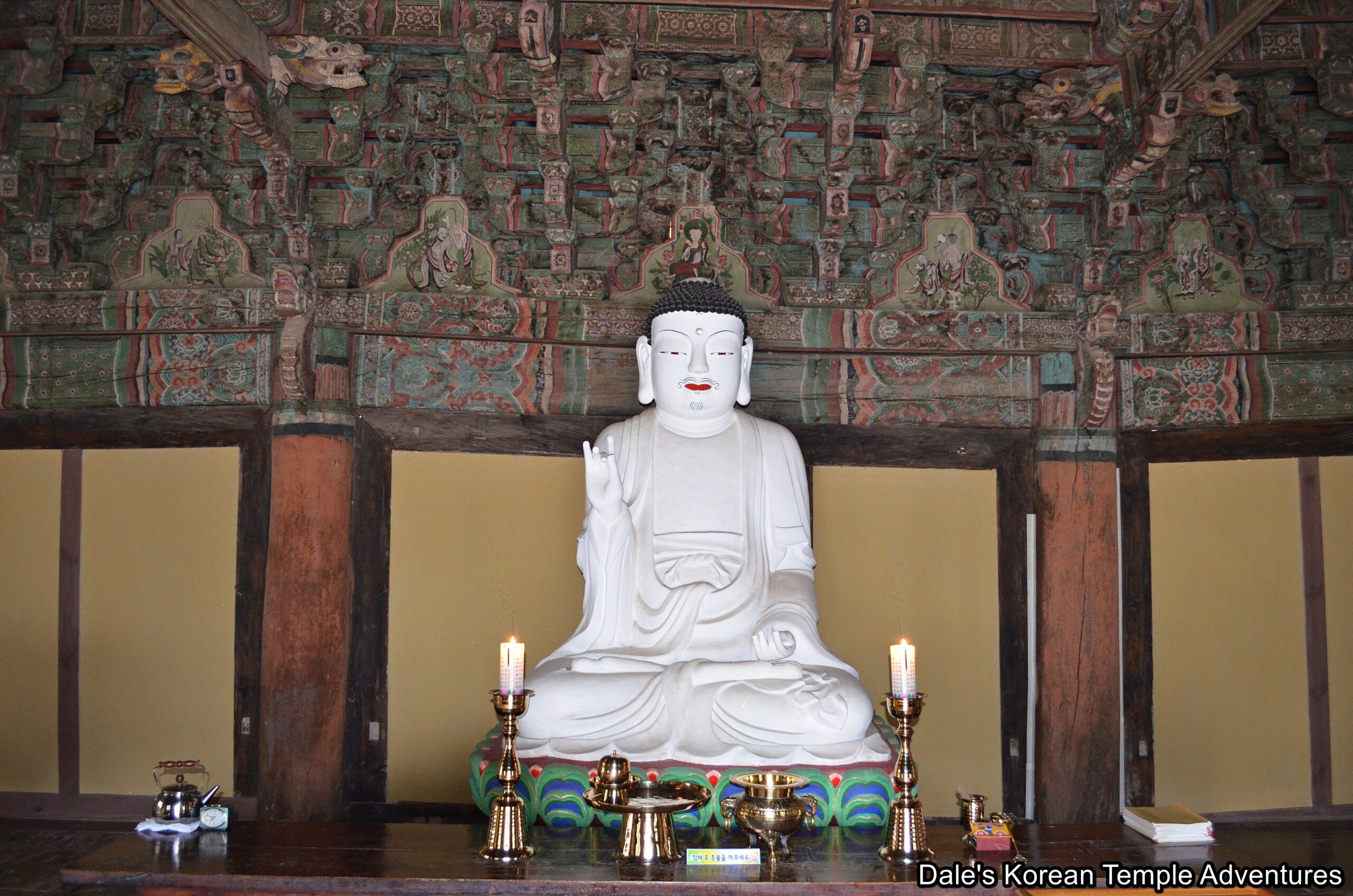
Introduction
According to tradition, Mireuk-bul, or the “Future Buddha,” in English, will achieve Buddhahood in 5.67 billion years after the death of the historical Buddha, Seokgamoni-bul. So Mireuk-bul is seen as both a Buddha and a Bodhisattva, which can sometimes be a bit confusing when you visit a temple and see that Mireuk-bul is Mireuk-bosal, or vice versa. They are one in the same, just at different stages of their spiritual journey. Mireuk-bul is the next in a long line of Buddhas much like Seokgamoni-bul (the Buddha we all know). Until then, Mireuk-bul resides in Dosol-cheon (Tusita Heaven) as a Bodhisattva, Mireuk-bosal. Currently, he passes his time by teaching heavenly beings prior to attaining Buddhahood. Because he is waiting for such a long time, Mireuk-bosal can often appear contemplative.
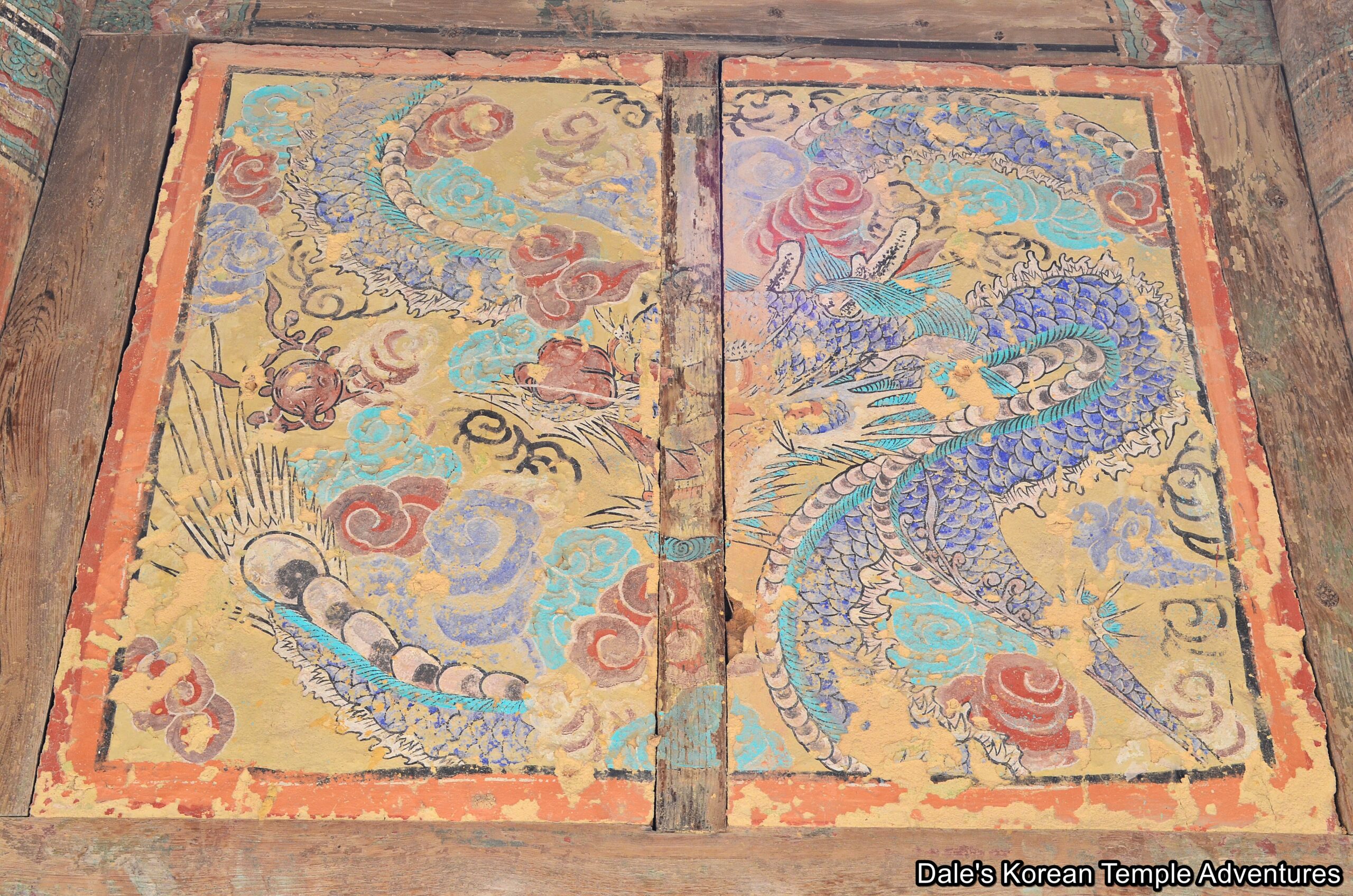
Mireuk-jeon Design
As for the Mireuk-jeon Hall, where Mireuk-bul commonly takes up residence at a Korean Buddhist temple, it can also be called a Yonghwa-jeon Hall. Yonghwa means “Dragon Flower Hall,” in English. This connection to a dragon might seem a bit confusing at first glance. However, according to tradition, when Mireuk-bosal returns to earth as Mireuk-bul, he will attain his Buddhahood under a Dragon Flower Tree. Dragons are thought to have a countless amount of scales on their body, which is a symbol of the infinite. It’s also symbolic of a dragon’s immeasurable power. Another connection to the dragon that Mireuk-bul has is that it’s believed that he turned into a dragon spirit as he entered into a meditative state while waiting to achieve Buddhahood. This also ties into a dragon’s ability, as a shape-shifter, to appear in any number of forms to help people towards the Pure Land, or “Jeongto,” in Korean.
Great Examples
People pray to Mireuk-bul for two reasons: one is for Mireuk-bul to come earlier; and the second is so that a devotee can be reborn in Mireuk-bul’s presence. There are wonderful examples of statues of Mireuk-bul in Korea like the one at Gwanchoksa Temple, the one at Geumsansa Temple, and the one at Beopjusa Temple.
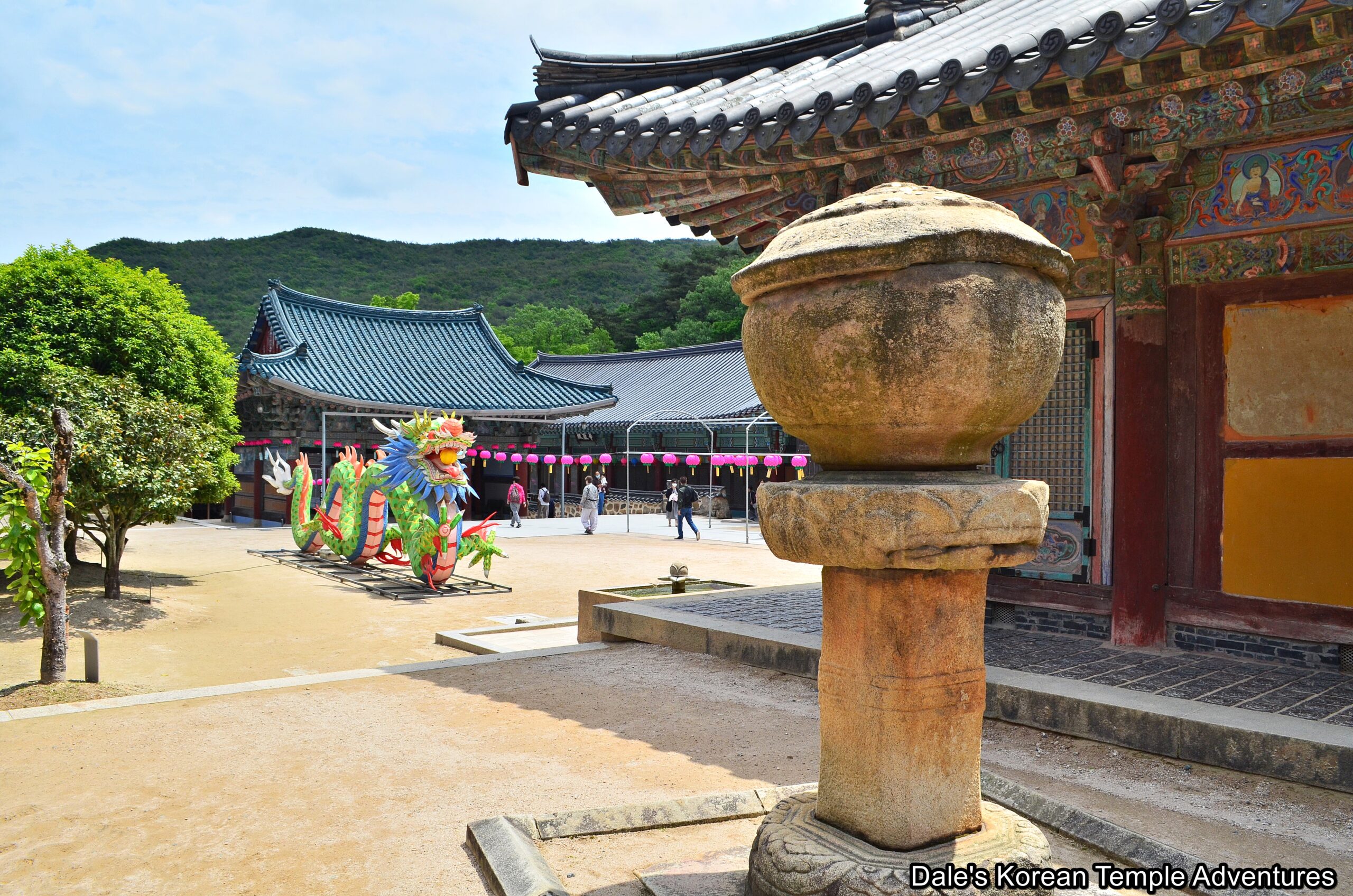
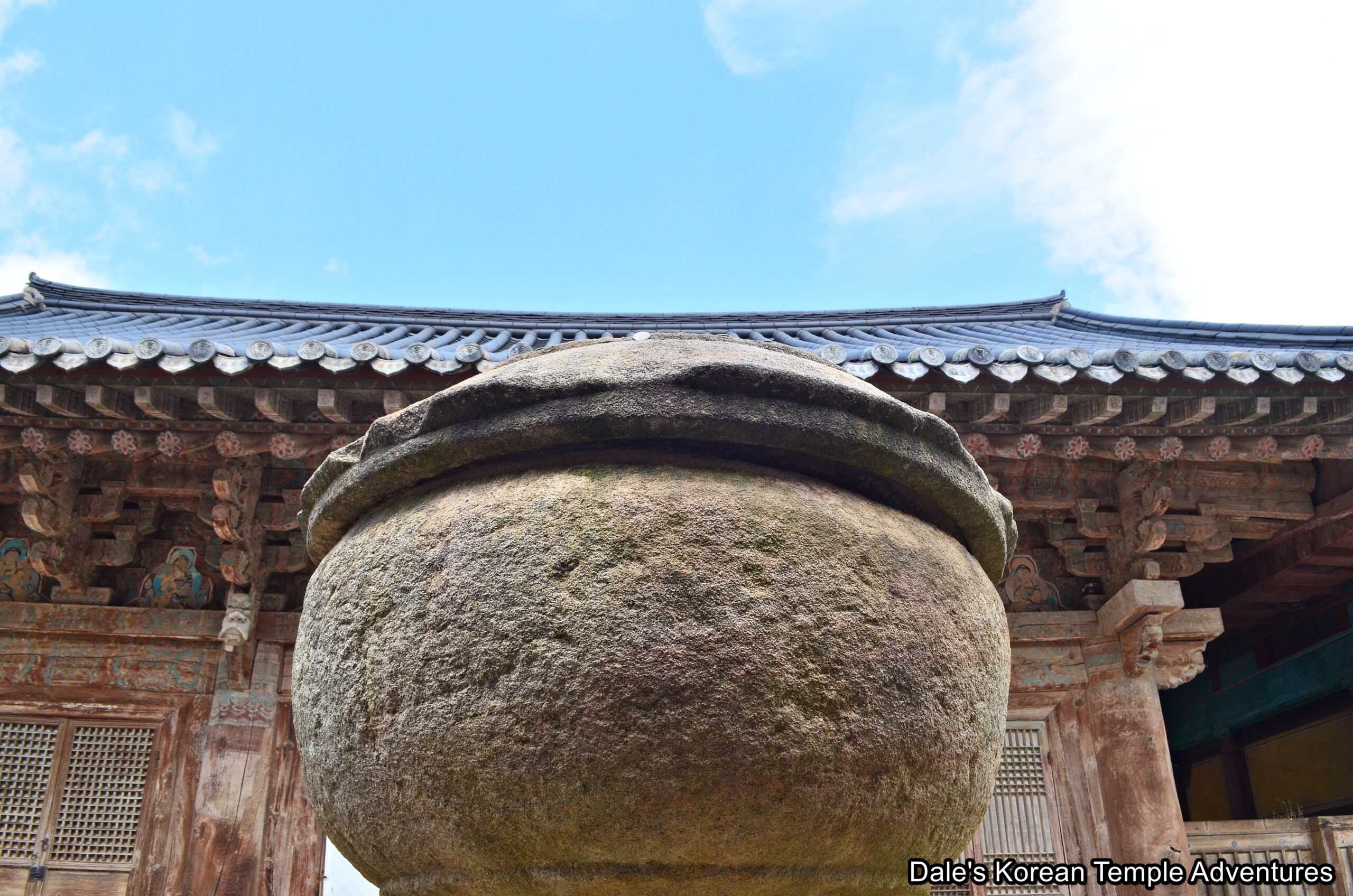
However, as great as they all are, I’ll be focusing on the Yonghwa-jeon Hall at Tongdosa Temple in this article. What’s especially unique about the Yonghwa-jeon Hall at Tongdosa Temple is the Alms Bowl Pagoda that stands out in front of it. The name of the Alms Bowl Pagoda is called “Bongbal-tap,” in Korean. It’s often called the robe and bowl tower, as it houses the actual rob and alms bowl of the Historical Buddha, Seokgamoni-bul. The Alms Bowl Pagoda is Korean Treasure #471, and it’s packed with symbolic meaning. The Buddha’s robe and bowl are regarded as symbols of the Buddhist teachings being handed down to teachers and their disciples. And the location of the Alms Bowl Pagoda out in front of the Yonghwa-jeon Hall indicates that Mireuk-bul will inherit the teachings and mantle of the Buddha upon Mireuk-bul’s return in 5.67 billion years. The Buddha’s artifacts and remains were brought to the Korean peninsula by Jajang-yulsa (590-658), and Tongdosa Temple was built to house these items in 646 A.D.
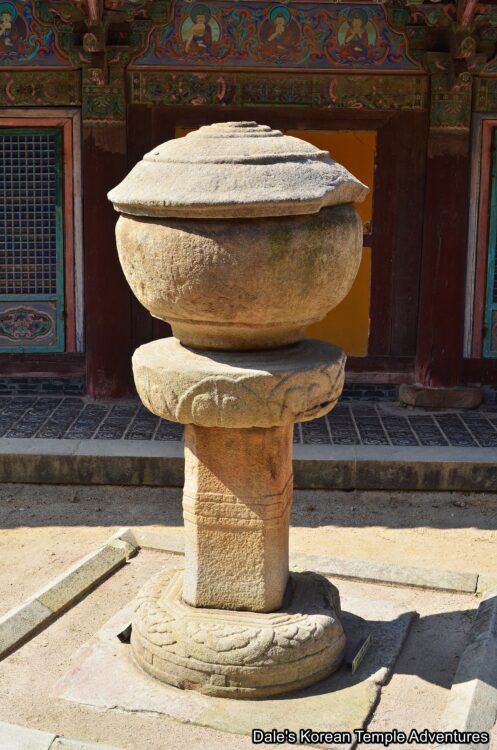
Structurally, the Alms Bowl Pagoda appears on a long pillar to support the lotus pedestal. On top of the pedestal is placed a stone bowl with a lid. It’s believed that the Alms Bowl Pagoda dates back to the Goryeo Dynasty (918-1392). However, there is some dispute as to when it was built because it appears as though the pedestal and bowl were stylistically built at two different times.
Conclusion
While not as popular as other shrine halls at Korean Buddhist temples, you’ll spot a Mireuk-jeon Hall, or Yonghwa-jeon Hall, at larger temples. So have a look for this amazing shrine hall and its connection to Buddhism’s past, present, and future.